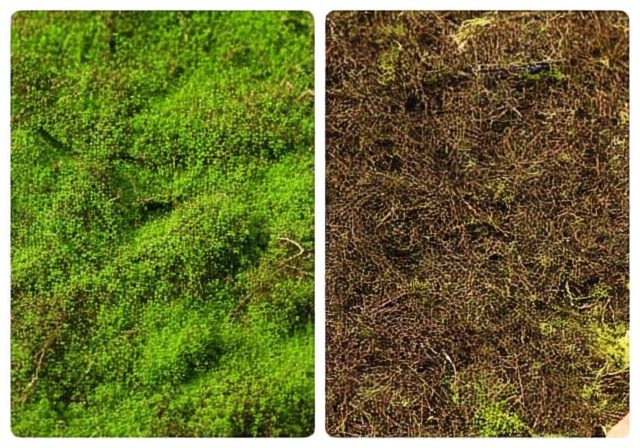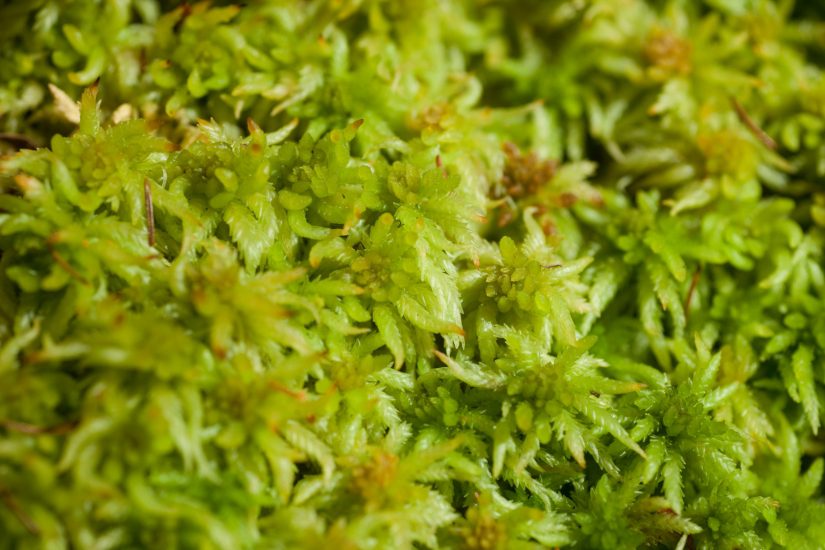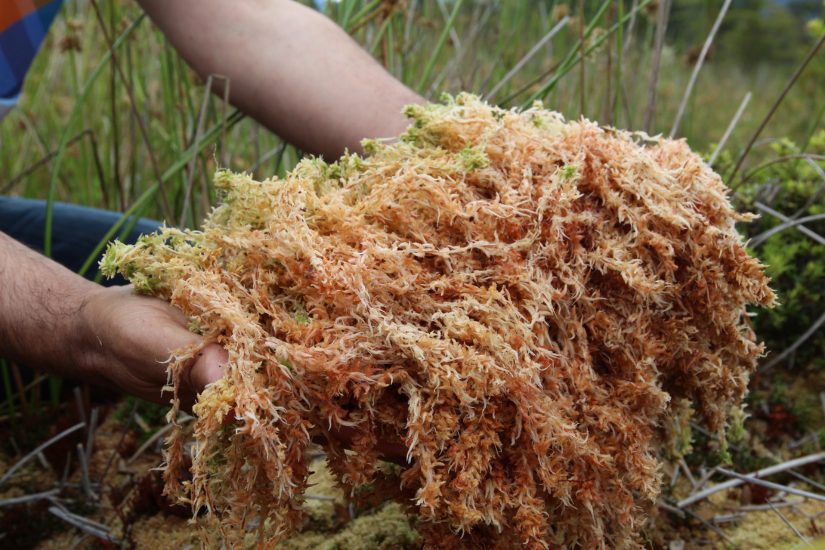

If you’ve ever stood in a garden center staring at bags of sphagnum moss and peat moss, wondering what the difference really is, you’re not alone. I spent years thinking they were basically the same thing until I dove deep into the environmental implications of each. With the UK’s peat moss ban for home gardeners taking effect in 2024 and growing environmental awareness worldwide, understanding these materials has never been more important.
Here’s what shocked me: peat moss takes thousands of years to form, yet we’re harvesting it faster than nature can replace it. Meanwhile, sphagnum moss can be sustainably harvested in just 5-6 years. That’s a massive difference that directly impacts our planet’s carbon storage and wetland ecosystems.
In this comprehensive guide, we’ll explore the crucial differences between sphagnum moss and peat moss, their environmental impacts, and the sustainable alternatives that are revolutionizing gardening practices. Whether you’re growing orchids, starting seeds, or improving your garden soil, you’ll learn exactly which option aligns with your gardening goals and environmental values.
Sphagnum moss is the living or recently harvested moss that grows on the surface of peat bogs and wetlands. Picture a vibrant green carpet floating on water – that’s sphagnum moss in its natural habitat. This remarkable plant can hold up to 20 times its weight in water, making it nature’s super sponge.

What makes sphagnum moss unique is its cellular structure. Each leaf contains both living cells and larger dead cells called hyaline cells, which act like tiny water reservoirs. This dual structure creates exceptional water retention while maintaining excellent air circulation – exactly what many plants need for healthy root development.
I learned from Oregon State University Extension that sphagnum moss grows relatively quickly compared to peat formation. In managed bog systems, it reaches harvestable maturity in 5-6 years. The harvesting process, when done sustainably, removes only the top layer while leaving the base intact to regenerate. This renewable aspect makes it significantly more sustainable than peat moss extraction.
The pH of sphagnum moss typically ranges from 4.0 to 5.0, making it naturally acidic. This acidity comes from the moss releasing hydrogen ions as it absorbs nutrients from its environment. For acid-loving plants like azaleas, blueberries, and orchids, this natural acidity provides ideal growing conditions without requiring additional amendments.
Peat moss, specifically sphagnum peat moss, is the partially decomposed remains of sphagnum moss and other bog plants that have accumulated over thousands of years. Think of it as nature’s time capsule – layers upon layers of organic matter compressed and preserved in waterlogged, oxygen-poor conditions.

According to North Dakota State University Extension, peat moss forms in wetlands over hundreds to thousands of years, with the main producing areas located in Russia and Canada. The formation process is incredibly slow – peat accumulates at a rate of only about 1 millimeter per year under ideal conditions. That means a meter-deep peat deposit represents roughly 1,000 years of accumulation.
The harvesting process for peat moss involves draining peat bogs and extracting the accumulated material using specialized machinery. This process permanently destroys the bog ecosystem and releases massive amounts of stored carbon into the atmosphere. The UK’s Department for Environment, Food and Rural Affairs notes that peatlands are our biggest terrestrial carbon store, making their preservation crucial for climate stability.
Peat moss shares the acidic pH range of sphagnum moss (3.5 to 4.5) but has a much finer, more decomposed texture. This fine texture provides different properties – while it still retains water well, it can become compacted over time and may restrict drainage if used excessively in potting mixes.
| Characteristic | Sphagnum Moss | Peat Moss |
|---|---|---|
| Origin | Living or recently harvested moss | Decomposed moss accumulated over millennia |
| Formation Time | 5-6 years to maturity | Hundreds to thousands of years |
| Renewability | Renewable with sustainable harvesting | Non-renewable resource |
| Texture | Fibrous, chunky, springy | Fine, powdery when dry |
| pH Level | 4.0 – 5.0 (acidic) | 3.5 – 4.5 (more acidic) |
| Water Retention | Holds 20x its weight | Holds 20x its weight |
| Air Circulation | Excellent – maintains structure | Good initially, compacts over time |
| Decomposition Rate | Slow – lasts 2-3 years | Very slow – lasts 2-3 years |
| Cost | More expensive ($15-25/bag) | Less expensive ($10-15/bag) |
| Carbon Impact | Minimal if sustainably harvested | Releases stored carbon when harvested |
| Best Uses | Orchids, air plants, top dressing | Soil amendment, seed starting |
| Availability | Limited, specialty stores | Widely available (restrictions emerging) |
The environmental implications of choosing between sphagnum moss and peat moss extend far beyond your garden. Peatlands cover only 3% of Earth’s land surface but store twice as much carbon as all the world’s forests combined. When we harvest peat moss, we’re not just removing a growing medium – we’re releasing carbon that’s been locked away for millennia.
Research from wetland ecologists cited by Oregon State University Extension confirms that peat is being harvested at non-sustainable rates. The extraction process requires draining bogs, which immediately begins releasing CO2 as the peat oxidizes. A single hectare of drained peatland can emit 15-20 tons of CO2 annually – equivalent to driving a car around 50,000 miles.
The UK’s peat moss ban for home gardeners, effective in 2024, represents a watershed moment in horticultural sustainability. Environment Secretary George Eustice stated that “peatlands are our biggest terrestrial carbon store and home to some of our rarest species.” This regulation signals a global shift toward recognizing peat bogs as critical carbon sinks rather than expendable resources.
Beyond carbon storage, peat bog destruction eliminates unique ecosystems that support specialized plants and animals found nowhere else. These wetlands also provide natural flood control, water filtration, and serve as archives of environmental history through preserved pollen and other organic materials.
In contrast, sustainably harvested sphagnum moss has a significantly lower environmental impact. When only the top layer is harvested and the base remains intact, the bog continues functioning as a carbon sink and wildlife habitat. However, even sphagnum harvesting must be carefully managed to prevent ecosystem degradation.
Understanding when to use sphagnum moss versus peat moss can make the difference between thriving and struggling plants. Each material excels in specific applications based on its unique properties.
Sphagnum moss works exceptionally well for orchids, particularly epiphytic species that naturally grow on trees. Its chunky texture provides the perfect balance of moisture retention and air circulation that orchid roots require. I’ve found that wrapping orchid roots in slightly damp sphagnum moss can revive stressed plants remarkably quickly.
For propagation, sphagnum moss creates an ideal environment for rooting cuttings. Its natural antibacterial properties help prevent rot while maintaining consistent moisture. Air layering, a propagation technique for woody plants, relies almost exclusively on sphagnum moss to encourage root development on branches still attached to the parent plant.
Carnivorous plants, which evolved in nutrient-poor bog environments, thrive in pure sphagnum moss. The moss provides the acidic, nutrient-free medium these specialized plants need while preventing mineral buildup that could damage their sensitive roots.
Peat moss has traditionally dominated as a soil amendment for improving water retention in sandy soils and increasing acidity for acid-loving plants. Penn State Extension notes that it provides good aeration and water-holding capacity when mixed with other materials, though excessive amounts can restrict drainage.
Seed starting mixes commonly include peat moss for its fine texture and water retention. The material creates a light, fluffy medium that delicate seedling roots can easily penetrate. However, as Penn State Extension warns, dry peat moss can be difficult to wet initially and requires thorough moistening before use.
Container gardening has long relied on peat moss as a primary component of potting mixes. Its ability to hold moisture while maintaining some drainage made it the gold standard for decades. Today, many gardeners are transitioning to peat-free alternatives that provide similar benefits without the environmental cost.
The search for peat moss alternatives has accelerated dramatically, with university researchers and commercial producers developing innovative solutions. These alternatives not only reduce environmental impact but often provide additional benefits that peat moss lacks.
Coconut coir, made from coconut husks, has emerged as the primary peat moss replacement. Oregon State University Extension research shows that coir performs on par with peat in controlled studies while offering better compression resistance and improved drainage characteristics. Unlike peat’s acidic pH, coir is closer to neutral (5.5-6.8), reducing the need for lime amendments.
Linda McMahan, a horticulturist at Oregon State University Extension, notes that coir holds moisture well and decomposes more slowly than peat. This slower decomposition means container plants need repotting less frequently, saving time and resources. The main drawbacks include potential salt content requiring rinsing and the carbon footprint of transportation from tropical production areas.
University of Maryland Extension researchers are developing peat-free mixes using diverse materials. Rice hulls, an agricultural waste product, provide excellent drainage and aeration while being lightweight and renewable. North Dakota State University researchers are testing tomato waste and biochar as soil amendments, finding promising results for both water retention and nutrient availability.
Biochar, produced from plant materials through pyrolysis, offers unique benefits including carbon sequestration and improved soil structure. While currently more expensive than peat, biochar permanently improves soil quality and actively removes carbon from the atmosphere – the opposite of peat extraction’s climate impact.
Composted bark, wood fiber, and aged compost provide locally sourced alternatives that support circular economy principles. These materials reduce waste while creating valuable growing media. For gardeners looking to create a self-sufficient garden, learning to compost organic materials provides a continuous supply of peat-free soil amendment.
Choosing between sphagnum moss, peat moss, and alternatives depends on your specific gardening needs and environmental priorities. For specialty applications like orchid cultivation or carnivorous plants, sustainably sourced sphagnum moss remains the best option. The key is finding suppliers who harvest responsibly and can verify their sustainability practices.
For general gardening, soil improvement, and container planting, peat-free alternatives now match or exceed peat moss performance. Coconut coir stands out as the most direct replacement, while combinations of compost, bark, and other organic materials can create custom mixes tailored to specific plants.
The transition away from peat isn’t just an environmental imperative – it’s an opportunity to discover better growing methods. Many gardeners report improved plant health and reduced maintenance with peat-free media. The initial adjustment period pays dividends through healthier soil biology and reduced environmental impact.
No, they’re distinctly different. Sphagnum moss is the living or recently harvested moss from bog surfaces, while peat moss is the decomposed remains of sphagnum and other plants that accumulated over thousands of years. Sphagnum moss has a fibrous, chunky texture and can be sustainably harvested, while peat moss is fine, powdery when dry, and is a non-renewable resource.
Sphagnum moss is far superior for orchids. Its chunky, fibrous structure provides the perfect balance of moisture retention and air circulation that orchid roots need. Peat moss is too fine and can compact around orchid roots, leading to rot. Most orchid growers exclusively use high-quality sphagnum moss for repotting and rehabilitation.
Peat moss harvesting destroys carbon-storing peatlands that took thousands of years to form. The extraction process releases massive amounts of stored CO2 – a drained peatland can emit 15-20 tons of CO2 per hectare annually. Additionally, peat bog destruction eliminates unique ecosystems and their flood control and water filtration services.
Coconut coir is the most direct replacement, offering similar water retention with better drainage. Other alternatives include composted bark, rice hulls, biochar, aged compost, and wood fiber. Many commercial peat-free potting mixes combine these materials to match peat’s properties while being environmentally sustainable.
Yes, when harvested sustainably. Sphagnum moss can regenerate in 5-6 years if only the top layer is harvested and the base remains intact. This is vastly different from peat moss, which takes hundreds to thousands of years to form and cannot be renewed within human timescales.
No, regular moss species lack sphagnum’s unique water-holding properties and antimicrobial characteristics. Sphagnum moss’s specialized cellular structure allows it to hold 20 times its weight in water while maintaining air spaces. Other mosses will compact and decompose quickly, potentially causing root rot.
Sphagnum moss typically lasts 2-3 years before needing replacement, depending on use. In orchid cultivation, it may need replacing annually as it breaks down and compacts. For propagation or temporary uses, it can often be cleaned and reused several times if properly maintained.
Research from Auburn University and University of Arkansas shows coir performs equally well or better than peat in most applications. Coir offers superior compression resistance, better drainage, neutral pH, and slower decomposition. While it has transportation emissions, coir’s renewable nature and peat bog preservation benefits make it environmentally preferable.
The choice between sphagnum moss and peat moss isn’t just about what works best in your garden – it’s about the kind of future we’re cultivating. With peat bogs storing twice as much carbon as all the world’s forests and taking millennia to form, continuing peat moss extraction is simply unsustainable.
The good news is that we’re not sacrificing garden success for environmental responsibility. Sustainable alternatives like coconut coir, biochar, and locally sourced organic materials often outperform peat while supporting circular economy principles. Universities worldwide are developing innovative growing media that will make peat obsolete within the decade.
For specialty applications requiring true sphagnum moss, choosing sustainably harvested sources ensures this remarkable material remains available for future generations. By understanding the crucial differences between sphagnum and peat moss, we can make informed decisions that benefit both our plants and our planet.
As we enter an era of increased environmental awareness and regulation, the gardening choices we make today will shape tomorrow’s ecosystems. Whether you’re starting seeds, amending soil, or growing specialized plants, choosing sustainable alternatives to peat moss is one of the most impactful decisions you can make as a gardener. The transition might require some adjustment, but our gardens – and our planet – will thrive because of it.

Don't let aphids, slugs, and caterpillars ruin another plant. Take back control with simple, natural methods that actually work.